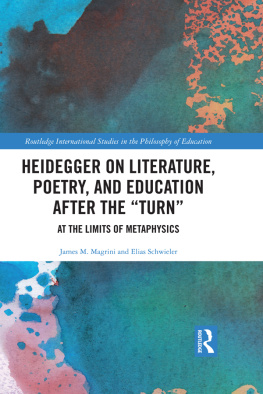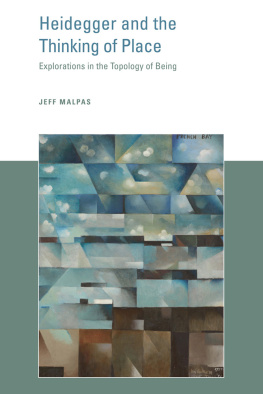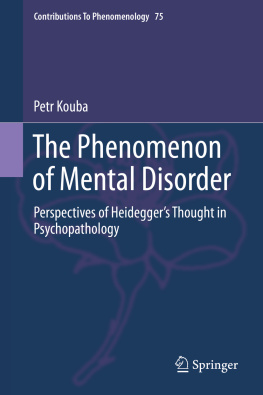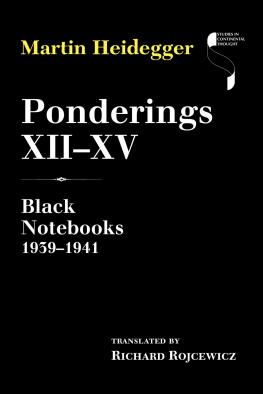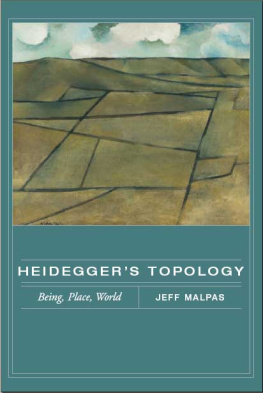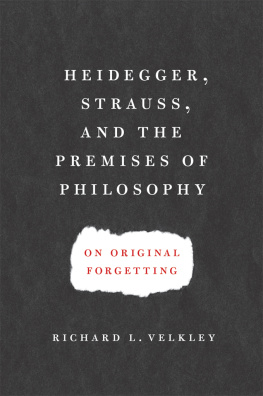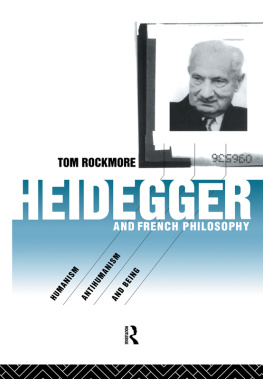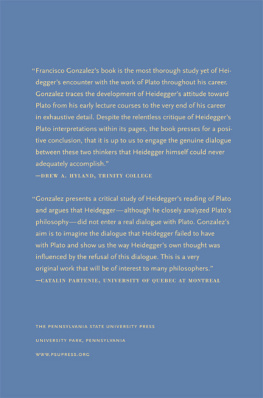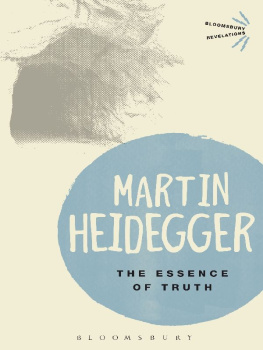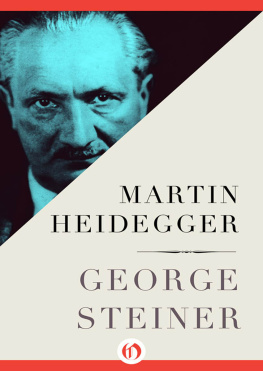Heidegger Martin - Nuclear futurism: the work of art in the age of remainderless destruction
Here you can read online Heidegger Martin - Nuclear futurism: the work of art in the age of remainderless destruction full text of the book (entire story) in english for free. Download pdf and epub, get meaning, cover and reviews about this ebook. City: Winchester;UK, year: 2012, publisher: John Hunt Publishing;Zero Books, genre: Religion. Description of the work, (preface) as well as reviews are available. Best literature library LitArk.com created for fans of good reading and offers a wide selection of genres:
Romance novel
Science fiction
Adventure
Detective
Science
History
Home and family
Prose
Art
Politics
Computer
Non-fiction
Religion
Business
Children
Humor
Choose a favorite category and find really read worthwhile books. Enjoy immersion in the world of imagination, feel the emotions of the characters or learn something new for yourself, make an fascinating discovery.

- Book:Nuclear futurism: the work of art in the age of remainderless destruction
- Author:
- Publisher:John Hunt Publishing;Zero Books
- Genre:
- Year:2012
- City:Winchester;UK
- Rating:5 / 5
- Favourites:Add to favourites
- Your mark:
- 100
- 1
- 2
- 3
- 4
- 5
Nuclear futurism: the work of art in the age of remainderless destruction: summary, description and annotation
We offer to read an annotation, description, summary or preface (depends on what the author of the book "Nuclear futurism: the work of art in the age of remainderless destruction" wrote himself). If you haven't found the necessary information about the book — write in the comments, we will try to find it.
Nuclear futurism: the work of art in the age of remainderless destruction — read online for free the complete book (whole text) full work
Below is the text of the book, divided by pages. System saving the place of the last page read, allows you to conveniently read the book "Nuclear futurism: the work of art in the age of remainderless destruction" online for free, without having to search again every time where you left off. Put a bookmark, and you can go to the page where you finished reading at any time.
Font size:
Interval:
Bookmark:
There are a few people who must be thanked for the roles they played in the writing and publication of this book. First and foremost are my parents, whose constant love and support is the foundation upon which all of my thinking is built. Likewise, Linda Persson, who has taught me more about art than I ever learnt from reading the books that went into writing this one. If it were not for her this would remain an unread ruin and all my future thinking unthought. Jeff Malpas and Dirk Meure from the University of Tasmania both played a large part in the writing of the initial notes and ideas that later became this book. Finally, many thanks to Zero Books for publishing the book at a time when the ideas it contains seem more important than ever for the future-no-longer-to-come.
The emergence of the future perfect as the first time and the last time, developed through the maneuvers of nuclear futurism, explodes the terminal stasis of the time of ends and the apocalyptic present of the end times. It does this not by providing a new vision of the future, still merely to come, but by revising the new itself as a futural now, an event that opens up the future in its very happening. There are two important sides to this re-envisioning of the future as the futural. The first is that this can only take place from within the context of the end times; that the new futurity must be formed from the very negation of the future in its present failure and the fragmentation of finality. This is the critical side of the argument, but it is a criticism that remains trapped within its own limits, always condemned to the endless wandering of destinerrance. Secondly, from within the stasis of this endless wandering and the aporias it generates, there is sent the envoi of the possibility of the event as an opening of the future.
By incorporating the poison of the end within itself criticism can burst apart its own limits and open itself up to this sending into the future in such a way that the dangers and horrors of those very ends can be confronted and overcome. The apocalypse is no longer either put off into the future, never present, or only appearing as a proliferation of apocalyptic horrors in the present; it can now be subject to critique and constant confrontation. The aporias of the ends of art and history are perfect examples of this dual movement. As the limits of each are subjected to critique through the discourses of futurism, nuclear criticism and hauntology they begin to ossify, historify and ultimately fragment under the futural force they reveal in their very happening. The end of history and the triumph of capitalism, imagined as the end of the world as in Jamesons image, is now put to work by this aporetic and apocalyptic logic, incorporating the danger of the apocalypse into itself and through this critical repetition sending forth a futural way out of the dead-end of history.
The operation of the two moments of destinerrance and the envoi have been examined and explored through writing and experimental literature as the death machine of language. This evocation of literature as death machine returns to Blanchots conception of the two slopes of literature and begins to sketch out the matters at stake here. Blanchots two slopes reflect the destinerrance of criticism and the sending of the event in terms of the death of reality at the hands of language and the return to matter through the death of language. Following the Derridian and Heideggerian implications and interpretations of the dual deaths of literature emphasized the temporal elements of the structure of the first time and the last time of hauntology and the event of the future perfect.
Temporality, however, is only ever half of the story. If the sending of the event is the how of the question is it happening? then the what of the happening still remains opaque. The opacity of these remains returns to the spectral materialism developed through reading Blanchots two slopes of literature against Derridas concept of the specter. To read the happening of the event as the drag of matter back through, and from, writing, literature and critical philosophy, perhaps opens up the spectral future as a speculative project, one that is still happening and remains to come.
These then are the fragments of the present from which a new world can be built. However this new world is nothing other than the one that is already present, but which cannot be seen because we are always looking towards an impossible future. Only through the suspension of the future and the return to matter through the explosion of the kernel of criticism and its ends and limits, for the first time and the last time, can this world condense around us. The temporality of the future perfect is the first step in this speculative project, but the spectral nature of this step is the next that must be taken.

Contemporary culture has eliminated both the concept of the
public and the figure of the intellectual. Former public spaces
both physical and cultural are now either derelict or colonized
by advertising. A cretinous anti-intellectualism presides,
cheerled by expensively educated hacks in the pay of
multinational corporations who reassure their bored readers
that there is no need to rouse themselves from their interpassive
stupor. The informal censorship internalized and propagated by
the cultural workers of late capitalism generates a banal
conformity that the propaganda chiefs of Stalinism could only
ever have dreamt of imposing. Zer0 Books knows that another
kind of discourse intellectual
without being academic, popular without being populist is not only possible: it is already
flourishing, in the regions beyond the striplit malls of so-called
mass media and the neurotically bureaucratic halls of the
academy. Zer0 is committed to the idea of publishing as a
making public of the intellectual. It is convinced that in
the unthinking, blandly consensual culture in which we live,
critical and engaged theoretical reflection is more important
than ever before.
Adorno, T. W., Weber, S. & Weber, S. (trans.), Prisms. (London: Neville Spearman, 1967).
Agamben, G., Binetti, V. & Casarino, C. (trans.), Means Without End: Notes on politics. (Mineapolis: University of Minesota Press, 2000).
Ballard, J.G., The Complete Short Stories. (London: Flamingo, 2002).
Blanchot, M., & Quasha, G. (ed.), The Station Hill Blanchot Reader. (Barrytown: Station Hill Press, 1999).
Bryant, L., Srnicek, N. & Harman, G. (eds.), The Speculative Turn: Continential Materialism and Realism. (Melbourne: re.press, 2011).
Caputo, J.D. (ed.), Deconstruction in a Nutshell: A conversation with Jacques Derrida. (New York: Fordham University Press, 1997).
Chapman, J., Meatphysics. (www.creationbooks.com: Creation Books, 2003).
Collings, M., This Is Modern Art. (London: Weidenfeld & Nicholson, 1999).
Critchley, S., Very Little Almost Nothing: Death, literature, philosophy. (London: Routledge, 1997).
Danto, A. C., After The End Of Art: Contemporary art and the pale of history. (Princeton: Princeton University Press, 1997).
Debord, G., Imrie, M. (trans.), Comments on the Society of the Spectacle. (London: Verso, 1990).
Derrida, J. & Dutoit, T. (trans.), Aporias: Dying awaiting (one another at) the limits of truth. (Stanford: Stanford University Press, 1993).
Derrida, J., Blanchot, M. & Rottenberg, E. (trans.), The Instant of my Death & Demeure. (Stanford: Stanford University Press, 2000).
Derrida, J. & Blass, A. (trans.),
Font size:
Interval:
Bookmark:
Similar books «Nuclear futurism: the work of art in the age of remainderless destruction»
Look at similar books to Nuclear futurism: the work of art in the age of remainderless destruction. We have selected literature similar in name and meaning in the hope of providing readers with more options to find new, interesting, not yet read works.
Discussion, reviews of the book Nuclear futurism: the work of art in the age of remainderless destruction and just readers' own opinions. Leave your comments, write what you think about the work, its meaning or the main characters. Specify what exactly you liked and what you didn't like, and why you think so.


